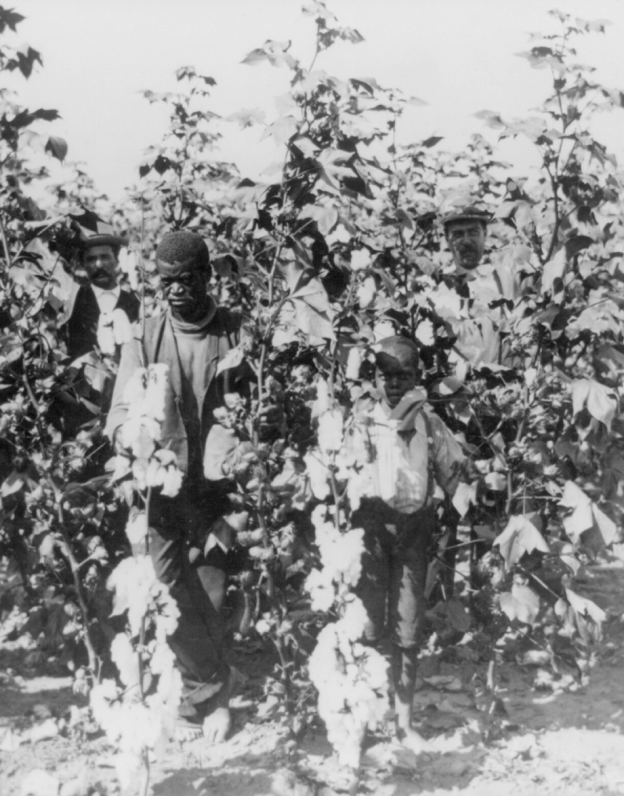Illustration of enslaved people gathering cotton on a southern plantation.

Illustration of enslaved people gathering cotton on a southern plantation.

Before the patenting of the cotton gin in 1794, it was impossible for enslaved workers to clean as much cotton as they could grow, with the average person able to remove seeds from only around one pound of cotton a day.

A hand-cranked gin, in contrast, could clean 50 pounds in the same amount of time. [#11] Recognizing the potential for exponentially increasing profits, enslavers aggressively acquired more land and more enslaved labor, helping drive the number of slave states from six in 1790 to 15 in 1860.

At that point, roughly one in three southerners was enslaved. Their unpaid labor produced three-quarters of the world’s cotton supply, which was primarily shipped to England and New England to be made into cloth. [#12]
With enslaved people consigned to increasingly larger plantations, enslavers sought to further increase productivity through torturing workers to meet ever-higher quotas. Enslavers’ sense of an endless supply of land and labor reduced competition, which made them willing to document and share the most effective torture methods with each other. [#13]

These strategies were so effective that “within 10 years after the cotton gin was put into use, the value of the total United States crop leaped from $150,000 to more than $8 million.” [#14]
As the nation headed into the Civil War, “cotton that was grown and picked by enslaved workers was the nation’s most valuable export.” [#15] The enslaved workers themselves made up 48% of the South’s total wealth in 1860. [#16] Given their ownership of other humans and their lifetime of labor, it is perhaps unsurprising that there were more millionaires per capita in the Mississippi Valley than anywhere else in the country by the war’s start. [#17]